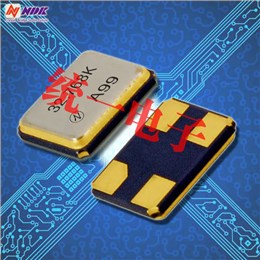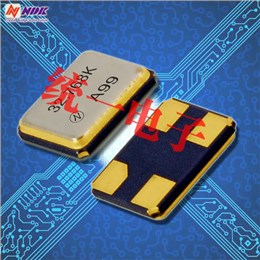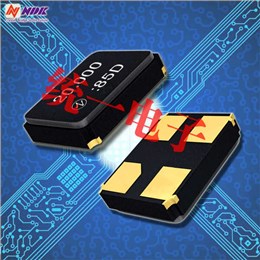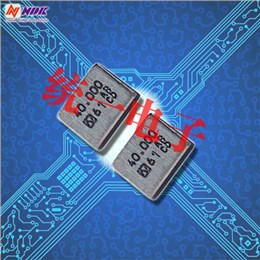遥遥领先独家首创的纳卡石英晶体选型,高新科技的发展赋予了时代更多的机会与可能性,而擅长把握每一次机会的纳卡公司,总能在微小的机会之中创造巨大的价值,并充分利用现有的资源整合,使得这些资源充分发挥最大的价值,而纳卡公司也能够在短时间之内实现快速的增长,同时以满足市场需求为主线,开发一系列性能出色,低成本高质量的石英晶振,经过自身的耐心打磨,以及不懈努力,如今在创新型产品上面了极大的突破,所研发出来的产品被广泛应用各个领域之中,产品因为出色的可靠性能成功吸引了大量用户的关注与称赞。
纳卡晶振公司是使用模拟电路技术,擅长定制规格的水晶设备制造厂。有强烈要求“低相位噪声、高频、高信赖性”的通信设备、广播设备、测量仪器、交通基础设施、医疗器械、防卫设备。另外,现在已经成为问题了,对生产中止,实现长期性的产品供应,以满足顾客未来的企业为目标。
晶体具有独特的分子结构,拥有以特定频率振动的非凡能力。这些振动被广泛应用,包括精密计时、通讯系统和电子设备。在这篇博文中,我们将深入研究晶体振动的频率,探索精密晶体的概念,并提供对高频晶体的见解。遥遥领先独家首创的纳卡石英晶体选型.
了解晶体振动
晶体频率:石英晶体振动的频率由其物理结构、成分和尺寸决定。每种晶体类型都有一个自然共振频率,也称为基频或共振频率。这个共振频率决定了晶体精确测量时间或产生稳定振荡的能力。
- 精密晶体:精密晶体专门设计用于以高度稳定的频率振动,确保电子系统中精确的计时和同步。这些晶体经过精心的制造工艺,即使在苛刻的环境中也能保证稳定可靠的性能。它们通常用于石英表、精密时钟和电信设备等应用中。
- 晶体的频率:晶体可以根据其应用要求以各种频率振动。虽然精密晶体通常工作在较低的频率,从几千赫兹到几兆赫,但也有高频晶体可以达到千兆赫范围的频率。合适的晶体频率的选择取决于多种因素,如所需的精度、功耗和特定电子系统的需求。
-

高频晶体的作用
- 通信系统:高频晶体在通信系统中起着至关重要的作用,因为精确的定时和同步至关重要。这些晶体能够实现精确的信号产生和调制,有助于在Wi-Fi、蓝牙和蜂窝网络等无线通信技术中实现无缝数据传输。
- 数字时钟和处理器:数字时钟和处理器中采用高频晶体,提供必要的定时信号,以确保精确的数据处理和不同组件之间的同步。这些晶体能够在现代电子设备中实现高速运行,从而提高整体系统性能。
- 雷达和科学仪器:高频晶体应用于需要精确测量和快速数据处理的雷达系统和科学仪器中。它们有助于这些先进技术的高分辨率成像、信号生成和数据采集能力。
晶体频率列表
由于石英晶体谐振器种类繁多,不可能提供详尽的晶体频率列表,但晶体制造商和供应商通常会提供详细说明其晶体振动频率的目录或在线资源。这些资源为工程师和设计师在项目中寻找具有特定频率要求的晶体提供了宝贵的信息。
结论
晶体拥有以特定频率振动的惊人能力,使其成为各种电子系统中的关键元件。从确保精确计时的精密晶体到支持高级通信和数据处理的高频晶体,晶体振动的频率范围为各种应用提供了解决方案。
Crystals, with their unique molecular structures, possess the remarkable ability to vibrate at specific frequencies. These vibrations are harnessed in a wide range of applications, including precision timekeeping, communication systems, and electronic devices. In this blog post, we will delve into the frequencies at which crystals vibrate, explore the concept of precision crystals, and provide insights into high-frequency crystals.
Understanding Crystal Vibrations
- Frequency of Crystals: The frequency at which a crystal vibrates is determined by its physical structure, composition, and dimensions. Each crystal type has a natural resonant frequency, also known as its fundamental frequency or resonance frequency. This resonant frequency determines the crystal's ability to accurately measure time or generate stable oscillations.
- Precision Crystals: Precision crystals are specifically engineered to vibrate at highly stable frequencies, ensuring precise timekeeping and synchronization in electronic systems. These crystals undergo meticulous manufacturing processes to guarantee consistent and reliable performance, even in demanding environments. They are commonly used in applications such as quartz watches, precision clocks, and telecommunications equipment.
- Frequencies of Crystals: Crystals can vibrate at various frequencies depending on their application requirements. While precision crystals typically operate at lower frequencies, ranging from a few kilohertz to a few megahertz, there are also high-frequency crystals that can reach frequencies in the gigahertz range. The selection of the appropriate crystal frequency depends on factors such as the desired accuracy, power consumption, and the specific electronic system's needs.
The Role of High-Frequency Crystals
- Communication Systems: High-frequency crystals play a vital role in communication systems, where accurate timing and synchronization are crucial. These crystals enable precise signal generation and modulation, facilitating seamless data transfer in wireless communication technologies like Wi-Fi, Bluetooth, and cellular networks.
- Digital Clocks and Processors: High-frequency crystals are employed in digital clocks and processors, providing the necessary timing signals to ensure accurate data processing and synchronization between different components. These crystals enable high-speed operations in modern electronic devices, improving overall system performance.
- Radar and Scientific Instruments: High-frequency crystals find applications in radar systems and scientific instruments that require precise measurements and rapid data processing. They contribute to the high-resolution imaging, signal generation, and data acquisition capabilities of these advanced technologies.
Crystal Frequency List
While it is not possible to provide an exhaustive crystal frequency list due to the vast number of crystal types available, crystal manufacturers and suppliers often provide catalogs or online resources that detail the frequencies at which their crystals vibrate. These resources offer valuable information for engineers and designers seeking crystals with specific frequency requirements for their projects.
Conclusion
Crystals possess the incredible ability to vibrate at specific frequencies, making them crucial components in various electronic systems. From precision crystals that ensure accurate timekeeping to high-frequency crystals that enable advanced communication and data processing, the range of frequencies at which crystals vibrate provides solutions for a myriad of applications.

 NDK晶振,谐振器,石英晶振,NX2016SA晶振
NDK晶振,谐振器,石英晶振,NX2016SA晶振 NDK晶振,谐振器,石英晶振,NX1612SA晶振
NDK晶振,谐振器,石英晶振,NX1612SA晶振 NDK晶振,谐振器,贴片晶振,NX3225GA晶振
NDK晶振,谐振器,贴片晶振,NX3225GA晶振 NDK晶振,谐振器,贴片晶振,NX1210AB晶振
NDK晶振,谐振器,贴片晶振,NX1210AB晶振

